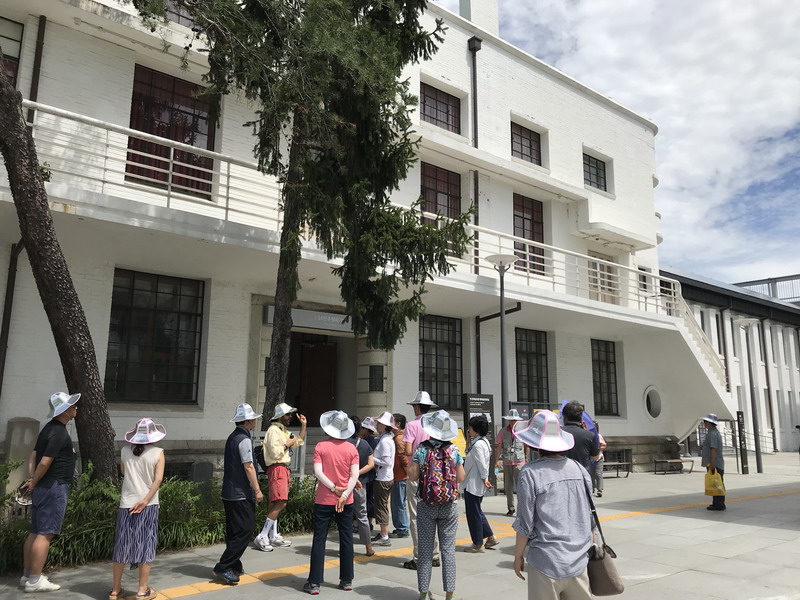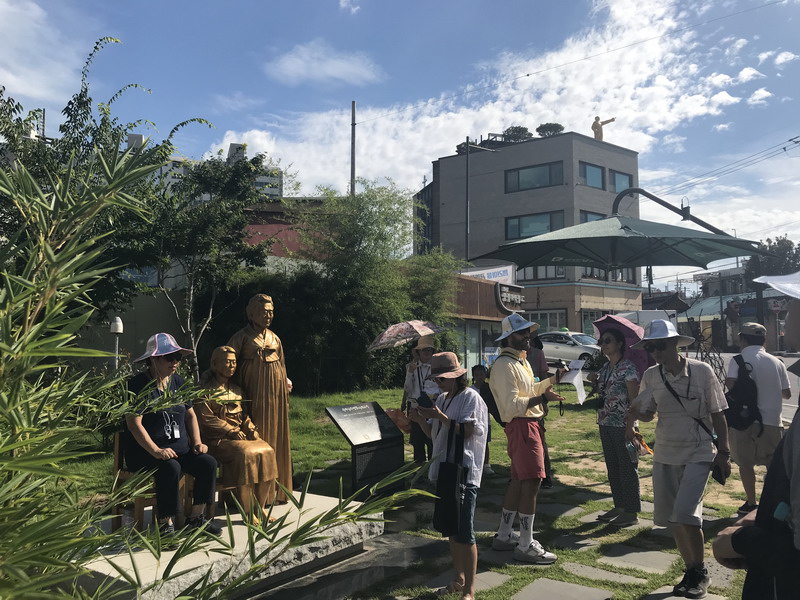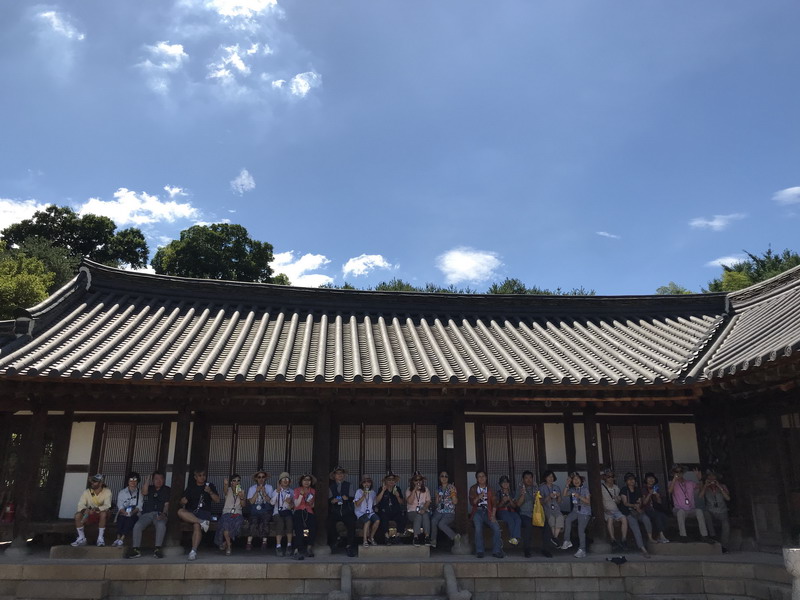Promoting Tourism in Gwangju Dark Tours in the City of Light
Written by Karina Prananto.
After its founding eleven years ago, the Gwangju Convention and Visitors Bureau (GCVB) has actively been promoting Gwangju as a tourism city locally and abroad. True to its name, it mainly promotes the MICE (meetings, incentives, conferences, and exhibitions) industry and tourism in general. This year, it will be promoting Gwangju as a city of history and human rights, in accordance with the 40th anniversary of the May 18 Democratic Uprising. We met with Lee Yong-heon, the director of the GCVB, who gave us more information on the program.
Gwangju News (GN): Thank you for agreeing to be interviewed! Could you tell us a bit about how the Gwangju Convention and Visitors Bureau was established and its purpose?
Lee Yong-heon (Lee): After the adoption of the regulation to promote the international conference industry, Gwangju was designated as an international conference city. The Gwangju Convention and Visitors Bureau (GCVB) was formed to revive the local economy by making Gwangju a destination for attracting international conferences, conventions, and tourists.

GN: What are the main roles of the GCVB in promoting Gwangju tourism?
Lee: To attract visitors to Gwangju, we participate in many exhibitions as well as promote Gwangju through online and offline platforms locally and abroad. Gwangju is not as famous as Seoul, Busan, or Jeju as a destination for travel, so we have to make Gwangju a new tourism destination by introducing something unique and new.
GN: What program do most foreigners participate in?
Lee: International visitors like to experience Korean culture programs the most. They like to make things by hand, try the local food, or do activities that require movement rather than listen to a tour guide. Among the programs offered, the most popular is making Korean food. Aside from that, dressing up in a hanbok and making Korean fans are also popular. Although these types of experience programs are the most attractive, we also try to focus on programs to introduce the city’s history. For example, we hosted a FAM Tour (familiarization tour) for tourists from Russia who wanted to get to know more about the city.
GN: How do you promote Gwangju to potential tourists abroad?
Lee: We have participated in the exhibitions held by the Korea Tourism Organization (KTO) to promote Gwangju to general tourists, and we also sometimes go abroad, partnering with our overseas organizations, to promote Gwangju tour packages. We have promoted Gwangju at exhibitions in Russia, Malaysia, Singapore, Ukraine, Germany, France, Finland, Japan, and many other places. Our main focus for promotion is Mudeung Mountain because, as a city with 1.5 million people, we are fortunate to have a mountain and national park so close to the city center. I think that is our specialty. Through KTO, we also distribute Gwangju’s promotional tourism materials online and offline abroad, in addition to promotion on social media.
GN: What are your main programs this year?
Lee: There is a growing interest in any special history linked to a city that people visit, so we want to focus on that, especially because this year is the 40th anniversary of the May 18 Democratic Uprising. Last year, our tour theme was “Travel to Gwangju with a Foreigner Living in Korea” (대한외국인과 함께하는 광주여행). We partnered with MODETOUR and they sold the tour packages for us. The tour departed from Seoul, as our target market was Koreans. Last year, it was only a one-day tour, but we hope to make it a two-day, one-night package this year, and not only for visitors from Seoul but also from Gyeonggi Province, Incheon, Daegu, and other cities. We plan to start advertising in March.

GN: Could you please tell us more about the special tours that will take place with the 40th Anniversary of May 18?
Lee: We are now planning to promote a Gwangju-specific “dark tour.” This kind of tour package is called “special interest travel” (SIT). We hope to sell this tour in the first half of the year and market it to local and overseas travelers through travel agencies and related organizations. We will try to promote the tour program to Japanese tourists as well, as recently many have been coming to Korea to visit sites related to May 18, like the May 18 National Cemetery, the May 18 Archive, May 18 Freedom Park, and experience programs related to May 18. If possible, we also plan to arrange a meeting with people related to May 18. For this, we will cooperate with local agencies in Japan. We also wish to promote the Gwangju history tour to middle and high school students from other regions as a destination for field trips.
GN: Could you tell us about the “Eui-hyang Gwangju” [의향광주, Gwangju for Justice] brand that is currently being promoted?
Lee: We wanted to make a tour program that is meaningful as well as memorable. There will always be something that we do not know about Gwangju, and we always like to find out new things about the city – that is the key point. So it will not just be a dark tour but will also combine cuisine and experience programs, making it a “light” tour as well. I think this is the reason why “ Travel to Gwangju with a Foreigner Living in Korea” was successful last year. For us, this is an easy Gwangju-tailored dark tour.
GN: Your program for a Gwangju dark tour was successfully carried out last year by attracting many tourists nationwide. What is your target this year?
Lee: We are targeting 1,000 tourists this year. We are now in the process of collaborating with travel agencies locally throughout the year. I think our target is attainable because we have special events coming up this year in Gwangju. For the first half of the year, we are focusing on the dark tour with the May 18 anniversary in mind, while in the second half of the year, we will be focusing on art-related tourism. Gwangju will host many artists and groups from around the world this year.
GN: What do you think of “dark tourism” as possibly being interpreted as something sad and gloomy compared to regular tours?
Lee: I think that Gwangju’s dark tour is not heavy or depressing at all. Like last year, we will also promote similar tours of art exhibitions and the Dwing-gul Dong-gul (뒹굴동굴) bunker cave in Yangnim Historical Village. Last year, we also brought tourists to see the original houses of Lee Jang-woo and Choi Seung-hyo from the Japanese colonial period. Through the survey that we did of tourists who participated, we found that they thought our dark tour was not sad or gloomy.

Also, last year Gwangju City selected seven representative foods, and one of them was the famous May 18 rice balls. We plan to include making these as an experience program so we can combine both Gwangju’s history of May 18 with Gwangju’s representative foods, making it a “delicious” trip.
GN: Are there any other special tours this year that you would like us to know about?
Lee: As I mentioned earlier, we will promote Gwangju for dark tourism in the first half of the year until sometime in July, and then during the rest of the year, we plan to promote art and food tourism. Travelers will be able to meet experts in the field and then participate in experience programs. You can check on this later through our official website and our tour agent partners.
GN: Where should people look for more information and register for the tours?
Lee: You can apply for these programs through our travel partners such as MODETOUR and Namhae Tours (남해관광) starting in February. From Japan, it is through Sanshin Travel; from Singapore, it is through CTC Travel; and from Russia it is through Art Tours. Or you can always contact us through our website: http://visitgwangju.kr/.
The Author
Karina, from Jakarta, Indonesia, has been a Gwangju resident since 2006 and been involved with Gwangju News since 2007. Her joy in life is her son, who is now on his toddler year. She loves traveling, reading, and watching horror movies.







